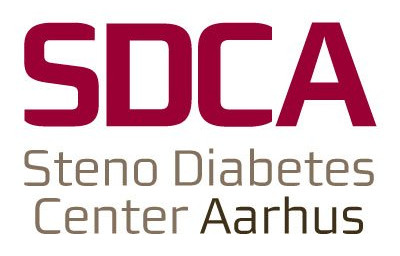NetCoupler: Inferring causal pathways between high-dimensional metabolic data and external factors
Luke W. Johnston
Steno Diabetes Center Aarhus, Denmark
Outline:
Background on analytical problem
NetCoupler history and implementation
R package work and usage
Examples using NetCoupler
Current challenges
Overall though, I'm very much looking forward to feedback, thoughts, or comments on NetCoupler to help make it better.
Modern studies generate a mass of metabolic data
-omics type data
Metabolic biomarkers
High dimensionality
Complex networks
"Traditional" analysis may use: Dimensionality reduction
Reducing number of variables with PCA.
This has the advantage of making things simpler while trying to maximize variance in the data. Afterward you can do modelling on each principal component. The disadvantage of this approach is that it loses a lot of information since the interdependence and connections between variables it not maintained.
"Traditional" analysis may use: Many regression-type models
O1 = M1 + covariatesO1 = M2 + covariates...O1 = M7 + covariatesO1 = M8 + covariatesSome ways you might go about analyzing this data is by running many regression models, one for each metabolic variable for instance.
This of course has problems since you're simply running a bunch of models and not taking account of the inherent interdependencies between variables.
This approach is nice in that you can extract information about the connection between metabolic variables. But there is no way to incorporate the disease outcome with this approach and in order to construct the network properly most methods require you provide a prespecified base network, which you might not know.
But, what if we...
want info about network structure?
don't know the network structure?
But, what if we...
want info about network structure?
don't know the network structure?
have an exposure, metabolites, and outcome?
But, what if we...
want info about network structure?
don't know the network structure?
have an exposure, metabolites, and outcome?
are interested in causal links?
(Potential) solution: NetCoupler
History and implementation
Initial development
Developed by Clemens Wittenbecher for his PhD thesis
Algorithm that:
- Finds most likely network structure
- Allows inclusion of exposure and outcome
- Identifies causal links between and within network
Infer (potentially) causal pathways with graphical model output
Met him at EDEG, asked if it was an R package. Started working together after that.
General framework and features
Pipe (magrittr
%>%or base R|>) friendlyUses tidyselect helpers (e.g.
starts_with(),contains())
General framework and features
Pipe (magrittr
%>%or base R|>) friendlyUses tidyselect helpers (e.g.
starts_with(),contains())Auto-complete friendly (e.g. start function names with
nc_)
General framework and features
Pipe (magrittr
%>%or base R|>) friendlyUses tidyselect helpers (e.g.
starts_with(),contains())Auto-complete friendly (e.g. start function names with
nc_)Inputs/outputs generally tibbles/dataframes or tidygraph tibbles
General framework and features
Pipe (magrittr
%>%or base R|>) friendlyUses tidyselect helpers (e.g.
starts_with(),contains())Auto-complete friendly (e.g. start function names with
nc_)Inputs/outputs generally tibbles/dataframes or tidygraph tibbles
Flexible with type of model
General framework and features
Pipe (magrittr
%>%or base R|>) friendlyUses tidyselect helpers (e.g.
starts_with(),contains())Auto-complete friendly (e.g. start function names with
nc_)Inputs/outputs generally tibbles/dataframes or tidygraph tibbles
Flexible with type of model
Website with beginner-focused documentation
Example code
std_data <- dataset %>% nc_standardize(starts_with("metabolite"))network <- std_data %>% nc_estimate_network(starts_with("metabolite")) %>% as_edge_tbl()Example code
outcome_estimates <- std_data %>% nc_estimate_outcome_links( edge_tbl = network, outcome = "HbA1c", model_function = lm )Example code
outcome_estimates <- std_data %>% nc_estimate_outcome_links( edge_tbl = network, outcome = "HbA1c", model_function = lm, adjustment_vars = c("age", "sex") )Example code
outcome_estimates <- std_data %>% nc_estimate_outcome_links( edge_tbl = network, outcome = "incident_diabetes", model_function = glm, adjustment_vars = c("age", "sex"), model_arg_list = list( family = binomial("logit") ), exponentiate = TRUE )Clemens' PhD research
- Aim: Identify potential metabolic links between exposure to dietary risk factors and later type 2 diabetes incidence based on metabolomics networks.
Red meat, acylcarnitines, and incident diabetes in EPIC-Potsdam
UK Biobank: Metabolic pathways between components of stature and HbA1c
UK Biobank characteristics
- Basics:
- ~480,000 participants
- Cross-sectional
- Stature measures
- Various demographics
- Metabolic variables:
- Cholesterol
- Albumin
- Alanine Aminotransferase
- Apolipoprotein A and B
- Aspartate Aminotransferase
- C-reactive Protein
- Gamma Glutamyltransferase
- HDL and LDL Cholesterol
- Triglycerides
Several limitations or things to improve
- Mainly, performance can be slow
- E.g. larger data or networks
Several limitations or things to improve
- Mainly, performance can be slow
- E.g. larger data or networks
- Untested on larger networks
Several limitations or things to improve
- Mainly, performance can be slow
- E.g. larger data or networks
Untested on larger networks
Untested on non-cross-sectional/time-to-event data
Several limitations or things to improve
- Mainly, performance can be slow
- E.g. larger data or networks
Untested on larger networks
Untested on non-cross-sectional/time-to-event data
Visualizing can be tricky
Several limitations or things to improve
- Mainly, performance can be slow
- E.g. larger data or networks
Untested on larger networks
Untested on non-cross-sectional/time-to-event data
Visualizing can be tricky
Interpreting estimates can be tricky
Before addressing many of these I want the API to be stable first and the general interface to be well-established before moving on to these things.

